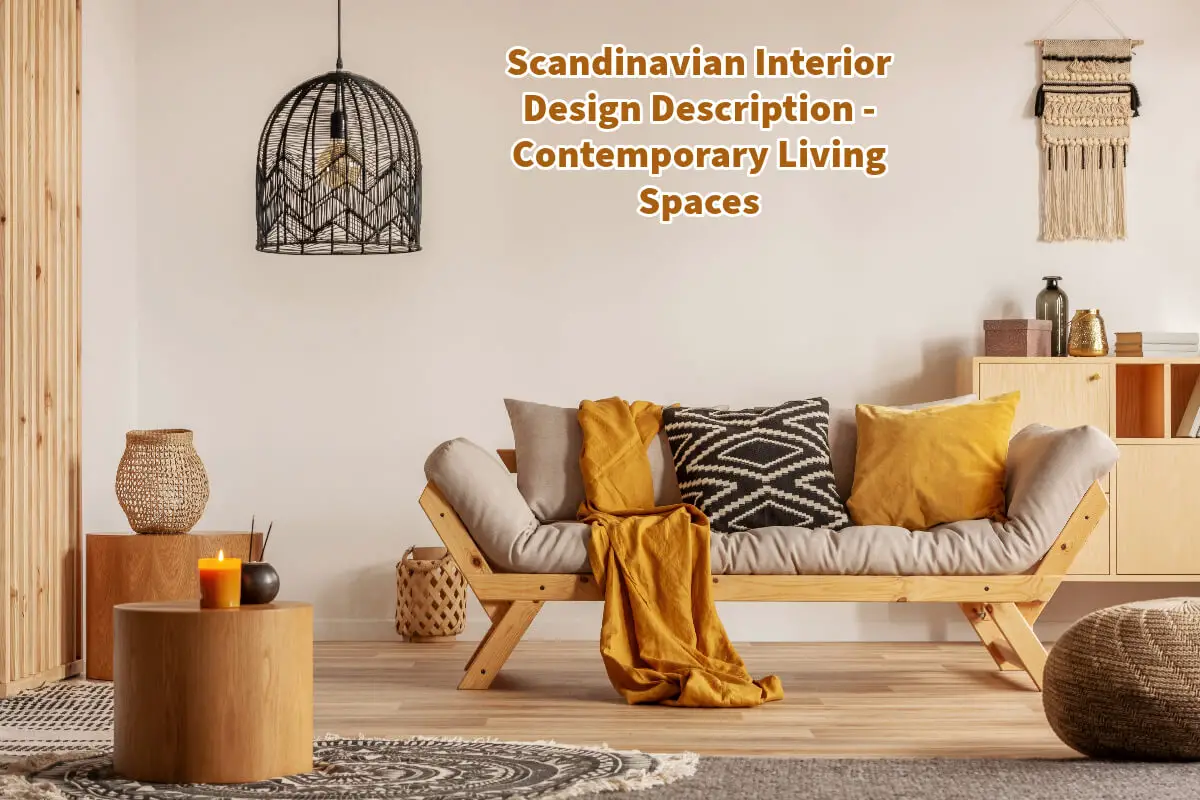Ever since my time in Sweden, I’ve developed a deep affection for Scandinavian design. Scandinavian design is a clean yet significant-looking trend.
Its minimalist yet compelling aesthetic has a timeless quality and continues to make waves globally. Far from being a fleeting fad, this design style has a lasting influence. Keep reading as we explore the subtleties that make Scandinavian interior design unique.
Table of Contents
- The Allure Of Scandinavian Interior Design: From History To Contemporary Living Spaces
- What Is Scandinavian Design?
- The Essence Of Scandinavian Design
- A Journey Through Time: The History Of Scandinavian Design
- Why Is Scandinavian Design Important?
- Architecture And Urban Planning: A Broader Impact
- The Elements: Furniture, Lighting, And Decor
- Related Content
The Allure Of Scandinavian Interior Design: From History To Contemporary Living Spaces
Scandinavian interior design possesses a timeless allure and continues to gain global prominence. Its enduring aesthetic and significant impact make it more than a passing trend. Read on as we delve deeper into the nuances of this distinctive design approach.
What Is Scandinavian Design?
Scandinavian design encapsulates a design philosophy that is both minimal and functional yet aesthetically pleasing. Although it spans various domains, including architecture and electronics, the style is most prominent in interior design.
It employs simple lines, light-filled spaces, and uncluttered interiors to create an inviting yet serene environment.
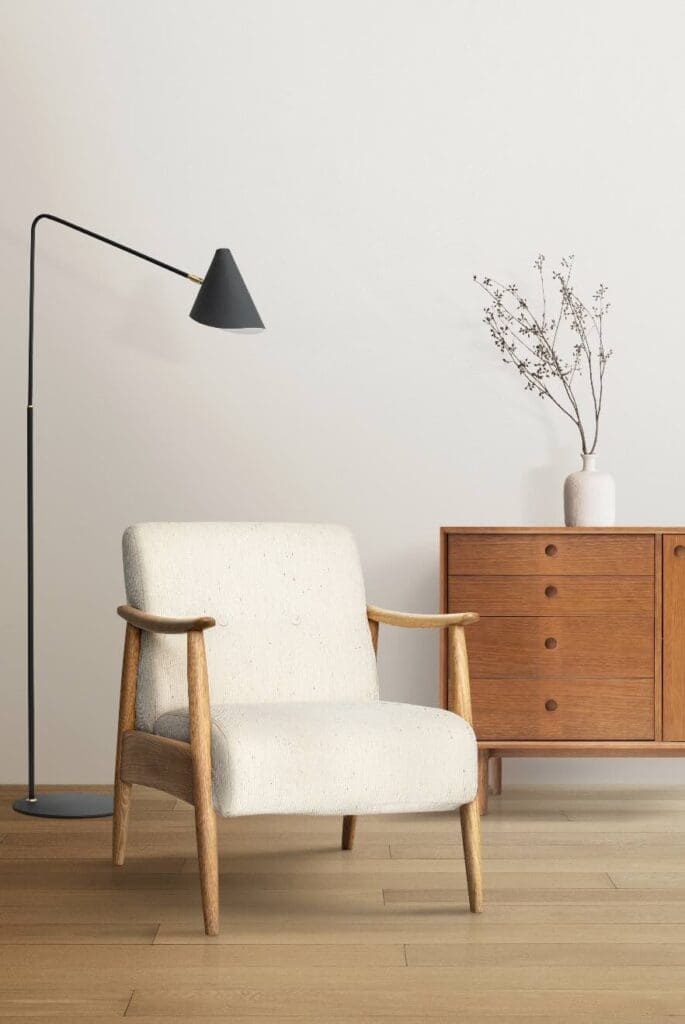
This approach doesn’t merely focus on aesthetics; it is equally concerned with improving the quality of life. Scandinavian design reflects a holistic approach to living, from its neutral, calming color palette to carefully choosing organic materials.
The Color Palette: Neutrals And Nature-Inspired Hues
A typical Scandinavian color scheme embraces neutral and monochromatic shades—primarily warm whites, blacks, and tans. These serve as the backdrop for occasional pops of color, adding vibrancy to the setting. The colors often reflect elements of nature, featuring shades like plush pink, gray-blue, and sage.
The Material Palette: Nature In Your Living Room
Reflecting the Nordic countries’ intimate relationship with nature, organic and natural materials are often the show’s stars in Scandinavian design. Materials like lightened wood, cotton, and wool are abundant, complemented by the lush green of house plants. The blend of natural elements contributes to a warm and inviting ambiance, a testament to the Scandinavian design philosophy’s success.
The Essence Of Scandinavian Design
Certain features distinguish Scandinavian design, shaping it into today’s influential design trend. Continue reading as we examine two critical elements of this design trend.
Simplicity And Functionality
Above all, the Scandinavian design is functional. Every design choice, from furniture to textiles, prioritizes utility. The design aims to enrich the lived experience, creating spaces that aren’t just beautiful and immensely practical.
Uncluttered Spaces
An essential aspect of the design style is its resistance to clutter. By stripping back unnecessary elements, the design showcases only the essential components of any product or setting. This minimalist approach allows for a tranquil environment as an antidote to the chaos of modern living.
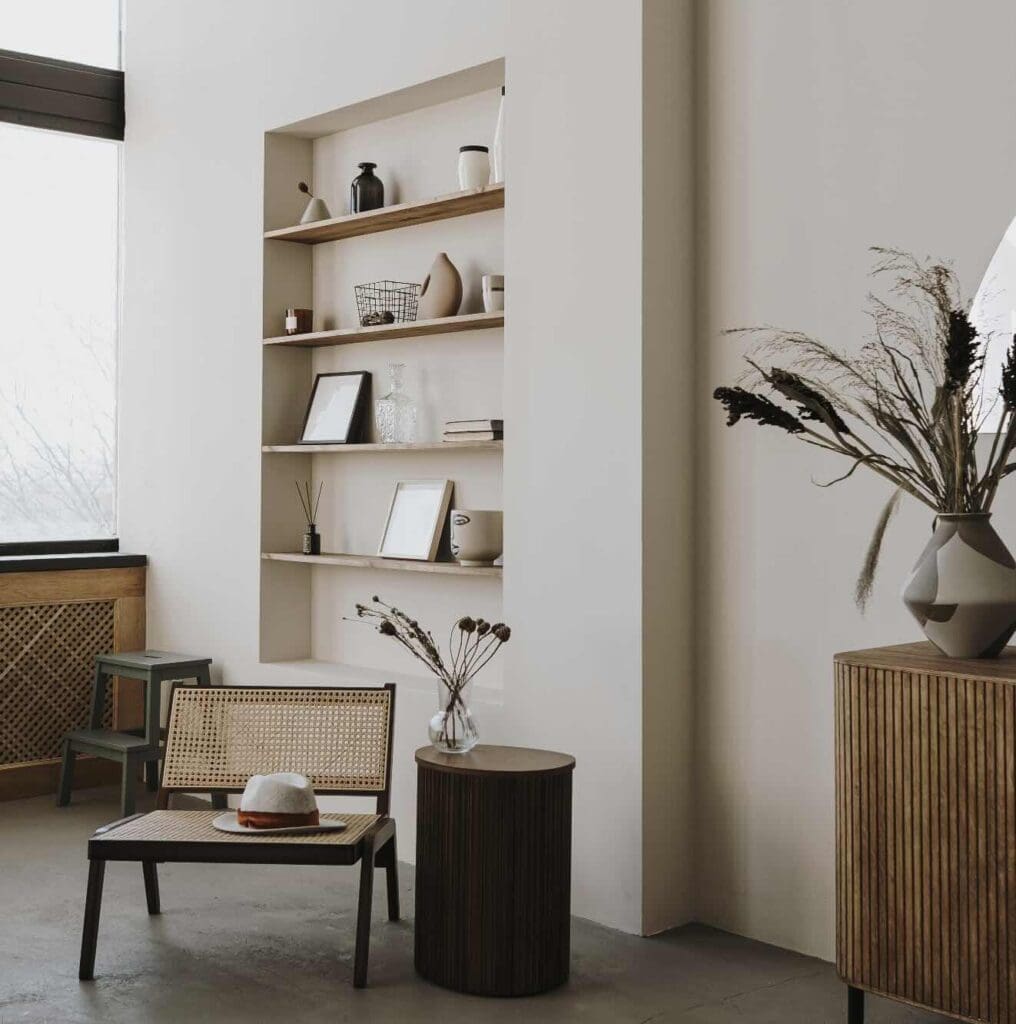
A Journey Through Time: The History Of Scandinavian Design
To fully understand Scandinavian design, it is good to understand some of the history of the design. Read on as we explore more.
The Early Days: Skønvirke And Democratic Design
The roots of the current Scandinavian design movement trace back to the early 20th century.
The Danish Selskabet for Dekorativ Kunst launched a magazine in 1914 named Skønvirke (“Graceful Work”). This title became synonymous with a new style of arts and crafts in Denmark, offering an alternative to elitist trends like Art Nouveau.
The Golden Age: Icons Of The Design World
The 1930s heralded the “golden age of Scandinavian design,” featuring the works of legendary designers such as Finland’s Alvar Aalto, Denmark’s Arne Jacobsen, Sweden’s Josef Frank, and many more. Various European artistic movements, including Constructivism and Functionalism, inspired them.
International Acclaim: The Lunning Prize Era
The 1950s saw Scandinavian design gain international recognition, partly thanks to the Lunning Prize. This award was given to outstanding Scandinavian designers from 1951 to 1970, catapulting the design style to global acclaim.
Why Is Scandinavian Design Important?
An Oasis For The Individual
In today’s fast-paced world, creating a living space that is aesthetically pleasing and nourishing for the soul is necessary. Scandinavian design accomplishes this by encouraging simplicity and minimalism, fostering peace and mental well-being.
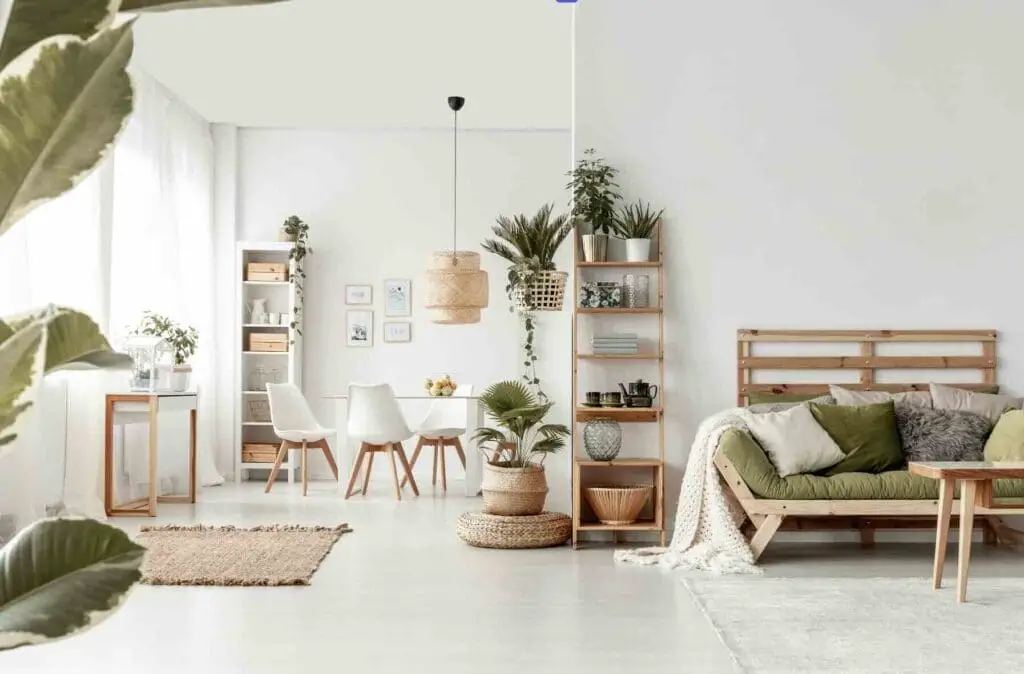
A Challenge To Consumerism
Furthermore, the design ethos counters the excessive consumerism that is rampant today. Its emphasis on quality and durability encourages sustainable living practices.
Architecture And Urban Planning: A Broader Impact
Beyond interiors, Scandinavian design principles extend to architecture and urban planning, incorporating natural light and materials to create functional and beautiful spaces. This mindset has enabled Scandinavian countries to develop cities that coexist harmoniously with nature, making them pioneers in sustainable living.
The Elements: Furniture, Lighting, And Decor
Scandinavian design remains a significant and enduring trend in today’s design landscape. Read on as we explore some essential elements.
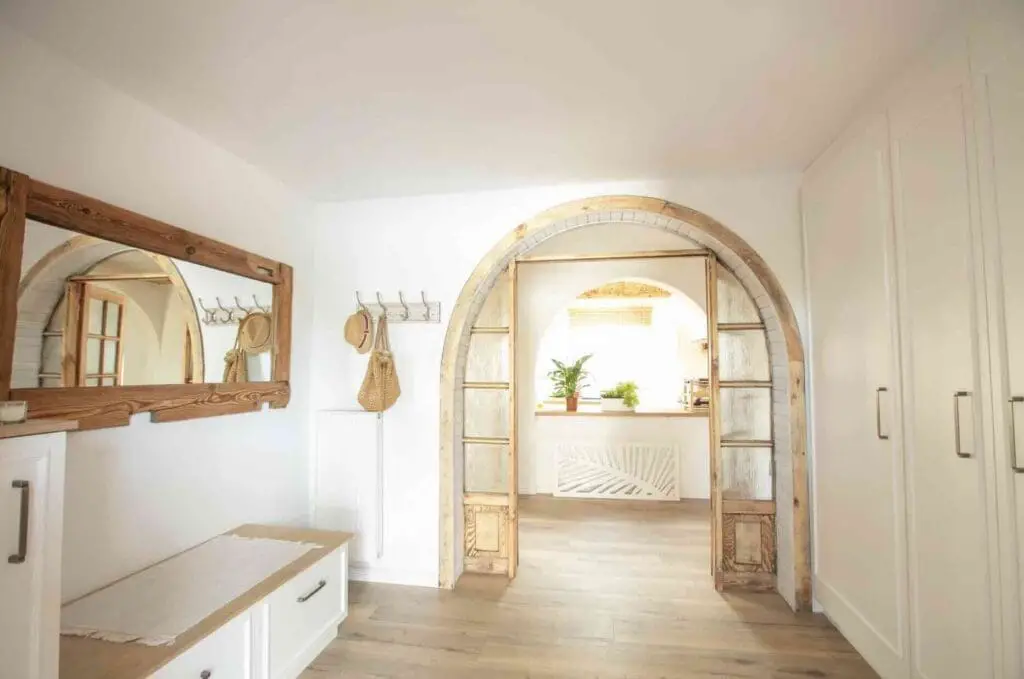
Craftsmanship In Furniture
In a Scandinavian interior, each piece of furniture is more than just an object; it’s a work of art that serves a function. Even something as simple as a chair is crafted with attention to detail, showcasing timeless design and impeccable craftsmanship.
The Importance Of Lighting
Due to the scarcity of natural light in the Nordic regions, lighting is a pivotal element in Scandinavian design. Multiple light sources create a balanced atmosphere, from cozy candlelight to bright ceiling lights. The iconic lamp designs by Poul Henningsen exemplify this approach.
Balanced Home Goods
Scandinavian home goods strike a perfect balance between minimalism and comfort. The design avoids clutter but creates a welcoming atmosphere, providing the best of both worlds.
A Philosophy For All Seasons
Scandinavian interior design isn’t just a trend; it’s a lifestyle. With its roots deeply embedded in history and a strong focus on sustainability, it’s a style that has stood the test of time and will continue to do so.
This design style offers more than just visual appeal; it offers a roadmap for better living. Promoting quality over quantity and function over extravagance serves as a guide for anyone looking to enrich their lives and homes.
Whether you’re new to the style or a long-time fan, the evergreen principles of Scandinavian design offer something for everyone.
Find out more about how Mondoro can help you create, develop, and manufacture excellent home decor and furniture products – don’t hesitate to contact me, Anita. Check out my email by clicking here or become a part of our community and join our newsletter by clicking here.
Mondoro gives out a FREE Lookbook to anyone interested. You can receive a copy of our latest Lookbook by clicking here.
Listen to our Podcast called Global Trade Gal. You can find it on all major podcast platforms. Try out listening to one of our podcasts by clicking here.
Subscribe to our Mondoro Company Limited YouTube Channel with great videos and information by clicking here.
If you’re interested in producing Scandi furniture for export and manufacturing, we at Mondoro would be delighted to discuss how we can assist you.
Related Content
Minimalist Interior Design Explored: Embracing The Trend
For quite some time, we’ve been dwelling in a society driven by excess, where more is often equated with better. However, the trend of minimalism stands in stark contrast to this ethos. Emphasizing the philosophy of ‘less is more,’ minimalism endorses choosing quality over sheer quantity. It encourages us to create interior spaces with an air of simplicity and tranquility rather than overwhelming opulence and clutter.
By clicking here, you can learn more by reading our blog, Minimalist Interior Design Explored: Embracing The Trend.
Wabi-Sabi: Embracing Imperfection And Transience In Design
In an era where everything is mass-produced to perfection, where symmetry is celebrated, and where glossy, flawless finishes are the norm, the ancient Japanese design philosophy of Wabi-Sabi offers a breath of fresh air. Instead of striving for perfection, Wabi-Sabi celebrates imperfection and sees beauty in the simple, rustic, and imperfect life and design choices.
To learn more, you can read Wabi-Sabi: Embracing Imperfection And Transience In Design by clicking here.
12 Living Room Home Decor Wall Ideas For Your Empty Walls
Filling the void with the right blend of style, function, and personality is crucial for setting the tone of your living room; this is where wall décor comes in, offering endless possibilities to transform your blank walls into an enticing visual narrative. Read on as we delve into twelve creative ideas for your living room wall decor, incorporating elements such as wall art, mirrors, artifacts, hanging plates, and more.
You can discover more by reading 12 Living Room Home Decor Wall Ideas For Your Empty Walls by clicking here.

